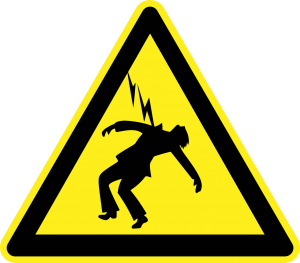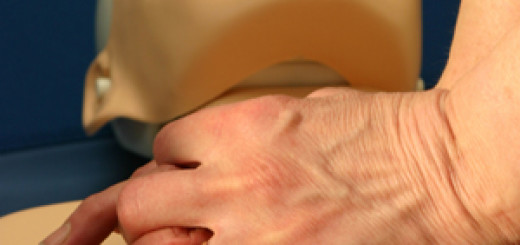First aid for an electrical shock
The human body is an efficient conductor of electricity. When a casualty receives an electric shock from a household appliance or a power line, the electricity is conducted through the body. A casualty may receive significant burns or the electric shock may interfere with the heart’s electrical system. Burns to the casualty may be greater than they appear on the surface.
When attending a casualty exposed to electricity, checking for danger is the priority. Be alert for hazards to yourself and to other rescuers, and approach the scene with extreme caution.
Domestic voltage
Be alert for hazards! It is urgent that the casualty be disconnected from the electrical source, either by:
- turning off the power supply and disconnecting any plugs from the outlet, and isolating the electricity supply at the main board/trip switches if possible; or
- removing the casualty from the electrical source by pushing or pulling them with non conducting materials, eg, wooden stick or board, rope, or blanket.
Be careful not to touch the casualty’s skin before the electrical source is disconnected, and be alert for the presence of water or conducting materials which may be in contact.
High voltage
High voltage electrocution involves an extreme degree of danger to rescuers due to the capacity of the electricity to earth itself by arcing across an air gap to an object or person. This risk increases with humidity and high voltage cables have danger zones around them of up to 20 metres depending on the voltage they carry and the level of humidity in the atmosphere.
If the electrical source is part of the electrical distribution grid (poles, pylons, underground cables, transformers or stations) you must not enter the area until electrical authorities have certified it safe. You can do nothing for a casualty within the zone of danger! Protect yourself and others.
Tyres insulate people inside a car with fallen power lines across it, so tell them to stay inside the car and not to jump out.
Ensure that all bystanders do not approach the scene and remain at least six metres away from the nearest suspected energised material.
Signs and symptoms of an electric shock
- history of working near electricity
- difficult, or absent breathing
- absent, weak or irregular pulse
- evidence of burns
- entrance and exit wound burns
- collapse and unconsciousness
First aid for an electrical shock
- Call for emergency medical help
- Inform electrical authorities if high voltage involved – most substations and power installations have an emergency number to ring
- Perform a primary survey and deal with any dangers present
- Treat any burns
- Perform CPR if the casualty is not breathing normally





